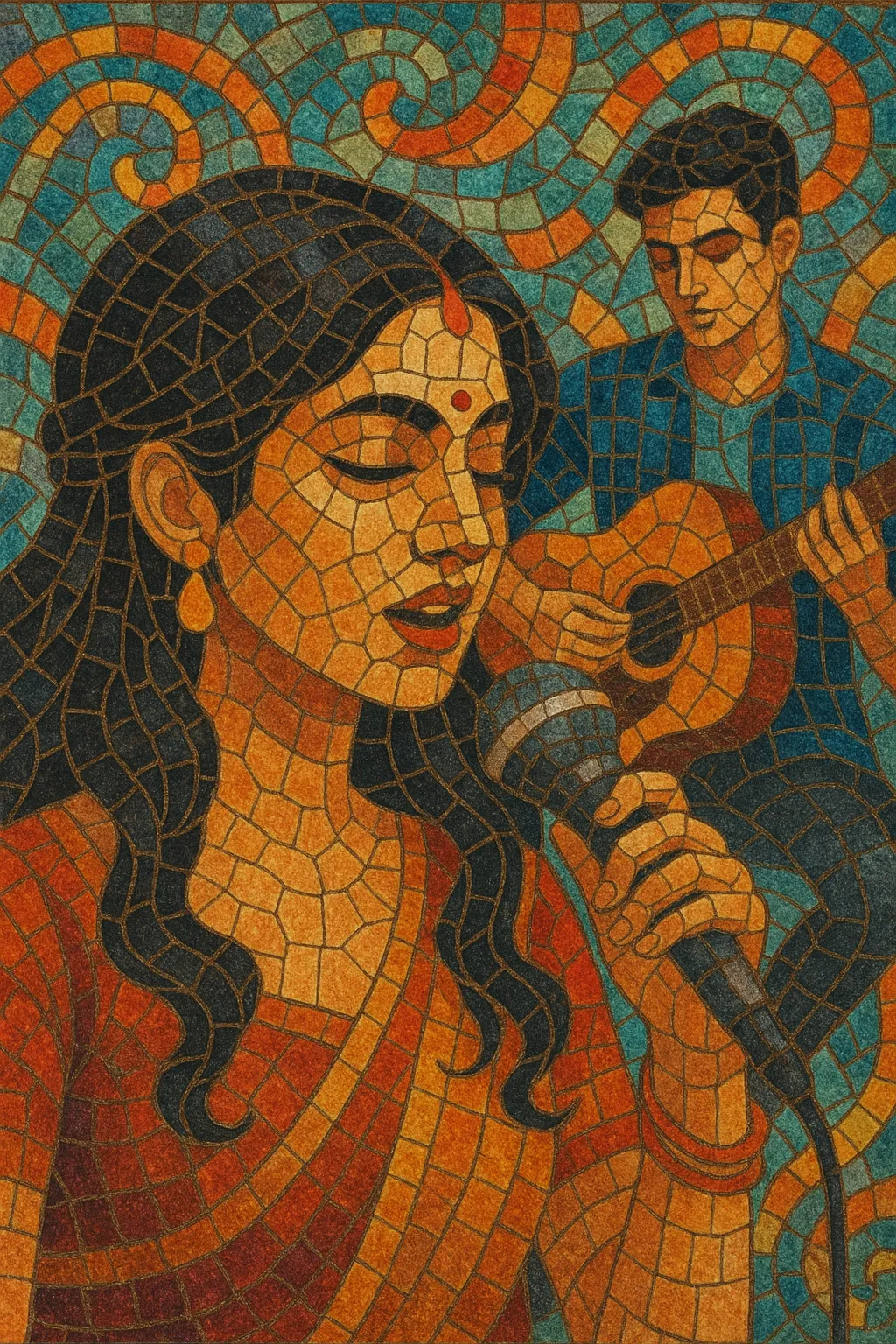Hindi pop (often called Indipop when referring to non-film Indian pop) is Hindi-language popular music created primarily outside of Bollywood film soundtracks.
It blends Western pop, dance, rock, R&B, and electronic production with Hindustani melodic sensibilities, Indian rhythmic motifs, and Hindi (often Hinglish) lyrics.
The genre rose to mass popularity in the 1990s through music television and an emerging independent label ecosystem, foregrounding standalone singles and artist-driven albums.
Signature features include catchy chorus hooks, glossy synth-driven arrangements, light classical ornamentation, and videos that emphasize youth culture, fashion, romance, and dance.
While Hindi popular songs had long existed within Bollywood film music, a distinct non-film, artist-led Hindi pop scene began coalescing in the late 1980s and early 1990s. Early pioneers experimented with Western pop, synths, and drum machines while keeping Indian melodic phrasing. The arrival of satellite TV (MTV India, Channel V) and indie labels (e.g., Magnasound, Times Music) created a platform for music videos and album-centric careers.
The mid-1990s saw Hindi pop explode into the mainstream. Artists like Alisha Chinai, Baba Sehgal, Colonial Cousins, and bands such as Euphoria popularized the idea of star performers outside films. Hooks driven by synth-pop and dance-pop production, Hinglish lyrics, and stylish videos resonated with urban youth. Pop-ballads (Lucky Ali, KK, Shaan) offered a softer, acoustic-leaning counterpoint, while remix culture and bhangra-pop crossovers broadened club appeal.
The 2000s brought broader stylistic hybrids—R&B, hip hop, electronica, and remixes—alongside continued balladry. Labels invested in video-first singles, and TV/radio countdowns amplified pop visibility. Although Bollywood regained dominance through massive film soundtracks, Hindi pop established a durable template for non-film hits and branded artist identities.
Streaming, YouTube, and social media re-energized non-film Hindi pop. Labels and channels (e.g., T-Series) began releasing standalone singles at scale, and independent acts leveraged direct-to-fan platforms. Collaborations with global producers, increased use of electronic pop/R&B textures, and festival circuits nurtured a modern indie-pop ecosystem. The success of Hindi pop also encouraged parallel regional pop scenes and influenced contemporary Bollywood’s pop-forward sound design.


